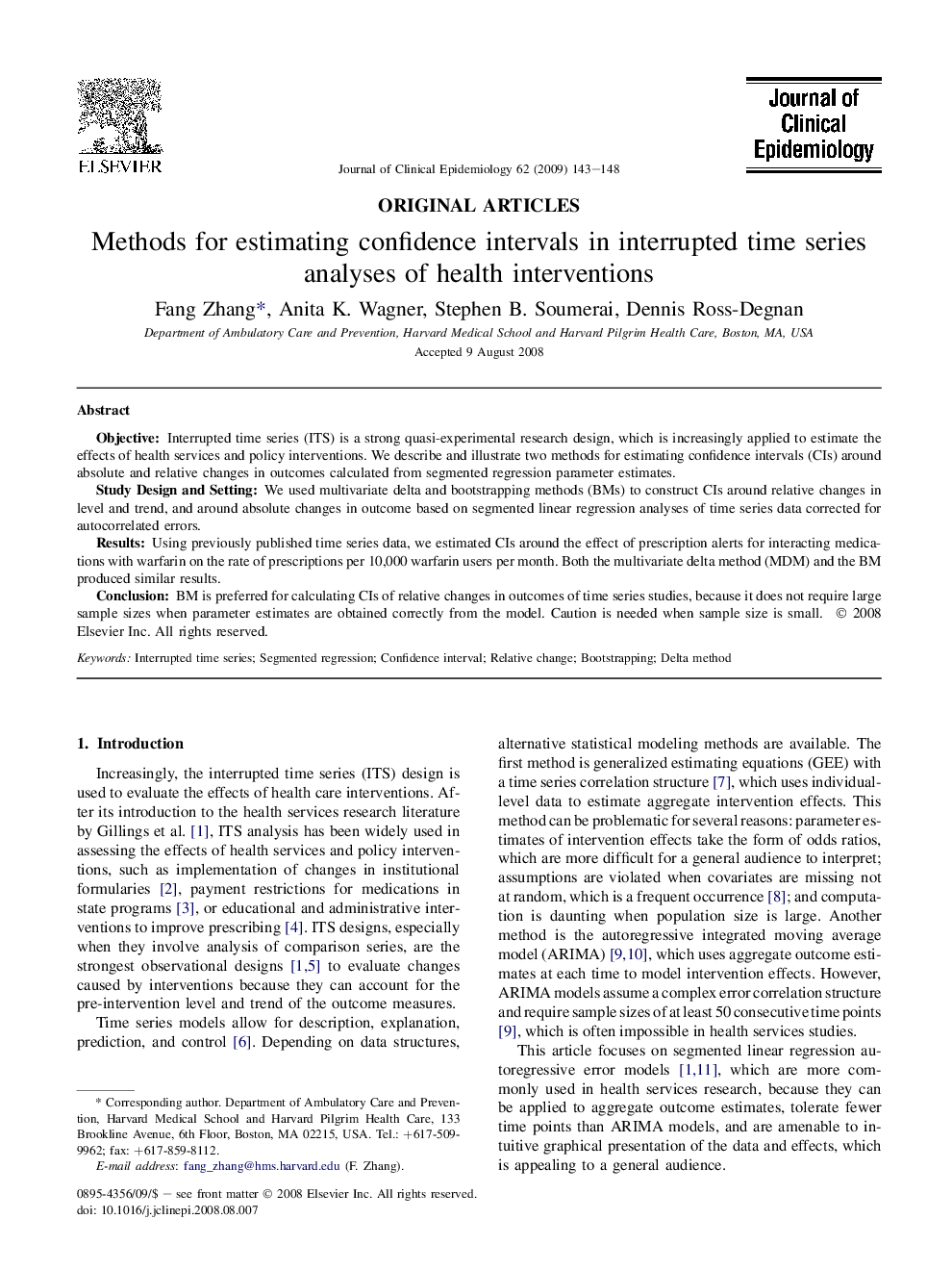| Article ID | Journal | Published Year | Pages | File Type |
|---|---|---|---|---|
| 1083231 | Journal of Clinical Epidemiology | 2009 | 6 Pages |
ObjectiveInterrupted time series (ITS) is a strong quasi-experimental research design, which is increasingly applied to estimate the effects of health services and policy interventions. We describe and illustrate two methods for estimating confidence intervals (CIs) around absolute and relative changes in outcomes calculated from segmented regression parameter estimates.Study Design and SettingWe used multivariate delta and bootstrapping methods (BMs) to construct CIs around relative changes in level and trend, and around absolute changes in outcome based on segmented linear regression analyses of time series data corrected for autocorrelated errors.ResultsUsing previously published time series data, we estimated CIs around the effect of prescription alerts for interacting medications with warfarin on the rate of prescriptions per 10,000 warfarin users per month. Both the multivariate delta method (MDM) and the BM produced similar results.ConclusionBM is preferred for calculating CIs of relative changes in outcomes of time series studies, because it does not require large sample sizes when parameter estimates are obtained correctly from the model. Caution is needed when sample size is small.
